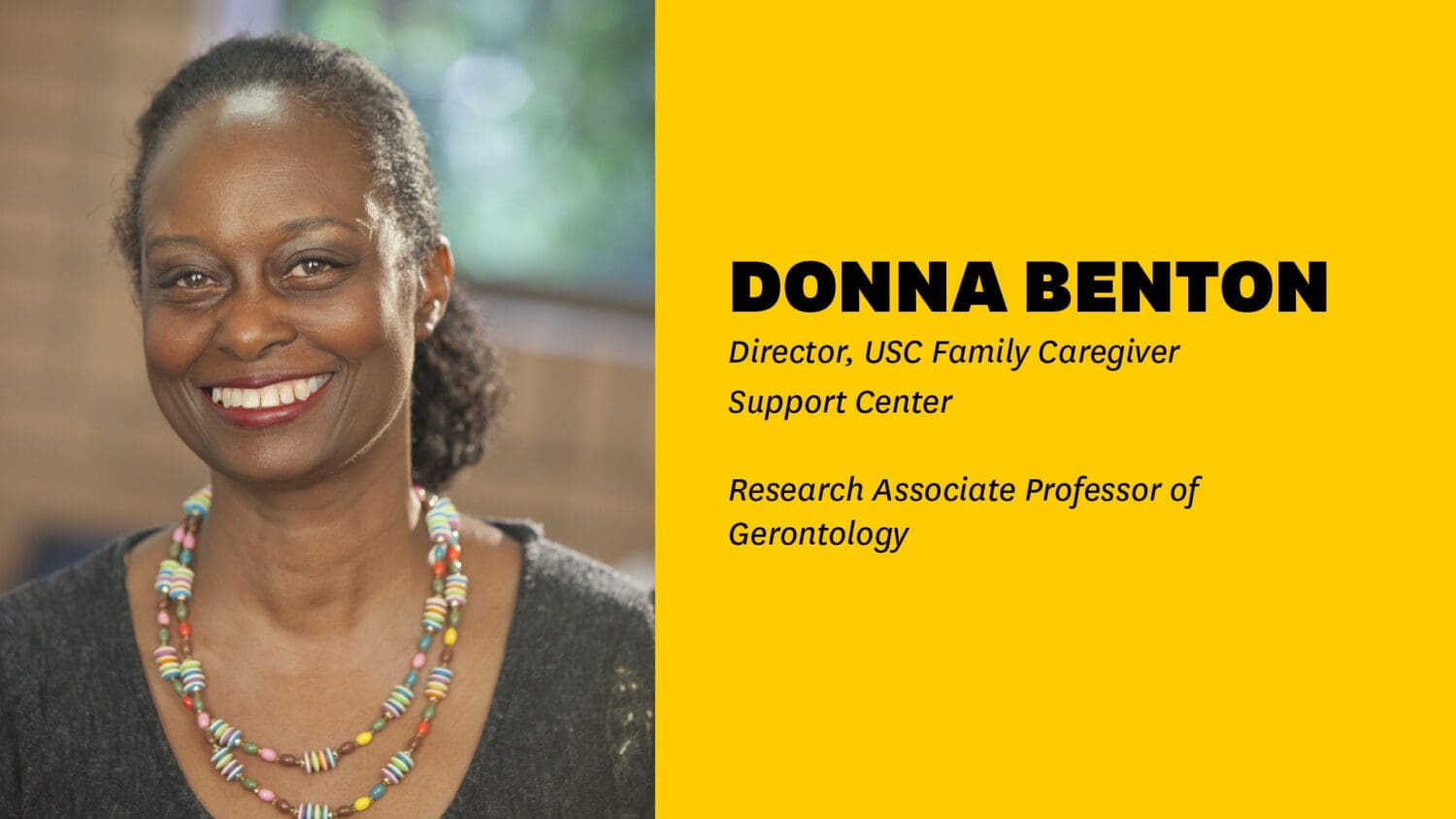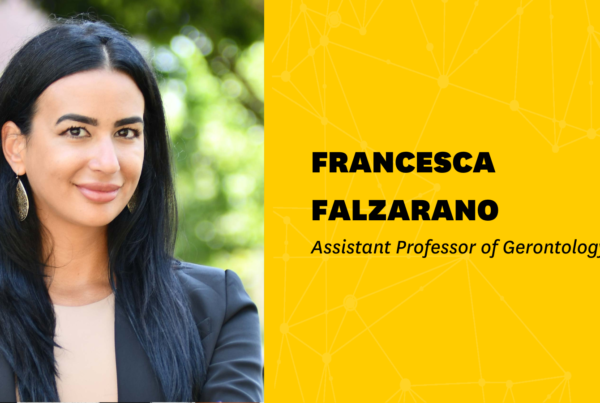Donna Benton, research associate professor and director of the USC Family Caregiver Support Center, joins Professor George Shannon to discuss the challenges faced by family caregivers during the coronavirus pandemic and how they can be addressed at individual, community, state, and national levels. Here are some highlights of what she said:
On who is a caregiver
“Rosalyn Carter, who was the wife of one of our former President Jimmy Carter, at one time said that the world kind of divides up into four types of people. Those are people who are currently caregivers, those who will be caregivers, those who know a caregiver, or those who will need a caregiver.”
On increased social isolation among caregivers due to COVID-19
“But now this is very different in our pandemic right now because, maybe before with their relative, they were able to say that you were able to go out and go shopping together. Or you could have somebody else come, a neighbor could stop by, and say you know I’m going to go out for a couple of hours, ‘Can you come and sit with mom or dad and while I go out?’ Well you can’t do that. You can’t bring someone into your home comfortably, safely because now you’re putting that person at risk. They probably have some medical condition that makes them at a higher risk for contracting Covid-19. And so the isolation is that the caregiver really can’t take what we call respite which is the ability to take a break and to get away from the caregiving situation.”
On how to contact a California Caregiver Resource Center
‘Well, pre-COVID and post-COVID, I think it’s important that caregivers look for support from both formal agencies that are out there such as, in California we have the California Caregiver Resource Centers that are serving— just focusing on you, the family caregiver across the states. … A lot of it starts with a phone call, so that you have someone that you can talk to that understands what you’re going through. … You can start by calling even 1-800-540-4442, so that you can get connected to the right resource center.”
On the need for policies to protect caregivers
“But what we can do for caregiving is have policies that help relieve some of that care when we’re not able— so that we don’t always have to make a choice between, say a paycheck and caring for someone, going in sick to work and caring for our relative, being able to sleep and caring for our relative. So we need to have built in policies that allow for breaks, allow for alternatives when we choose to have them there. And all of those things may not be a direct pay to the caregiver, but it provides more options for care, for both the caregiver and the person they’re caring for.”
On how to advocate for caregivers through personal stories
“People get scared about talking to a legislator or their elected official and they go, ‘Well I don’t know how to develop policies.’ Well, you know what? You don’t have to come up with the wording. What you can do is tell your struggle, tell your story, tell not just the struggles but also why you do what you do. And your story will be enough for the policymakers. They’re the ones that need to understand where the gaps are. And to understand what your needs are. And so when you tell your story all you have to add is, ‘And I wish that someone could do blah.’ Don’t worry if it’s there or not right now. You just give out your wish list.”
On the health impacts of caregiving
“Twenty-three percent of caregivers say that just by being a family caregiver, their health has been made worse. And why is that? Because they’re spending time— they’re taking their relatives to the doctor and they’re not going to the doctor themselves for their own health care. Because they may not have time to do it. They have to make a choice. I can either get my relative, who is sicker than I am, to the doctor. Or I can go to work. Or I can use my sick time for me. And so, you know, having to make those kinds of choices— that means that we really need to have better policies overall for long-term care services and supports in our communities.”
On the need for caregivers to take care of themselves, too
“And again, that’s often because we don’t see ourselves separate and apart from our role as a caregiver needing, what we call needing your oxygen— putting your oxygen on first. So if we don’t care for ourselves we’re not going to be there, in the long run, to care for the person that we want to, but we tend not to want to put the oxygen on first.”
On racial and socioeconomic health disparities
“You know, the pandemic right now has really just removed that very thin veil that was covering up the health disparities and disparities in social determinants of health in our society right now. Racism has always pushed our African-American, Black, Latino, and other ethnic and racial groups to the margins in terms of how we’ve set up policies to help them with family care overall. Even when the in-home support services were set up, part of that was that there were not reimbursements for being a caregiver in terms of benefits that you could pay into Social Security or things like that. So that people that worked in domestic work never could, kind of, build up equity for themselves— financial equity. And then when it comes to health disparities right now for the African-American community, diseases like Alzheimer’s are considerably higher among that population and we’re more at risk because of other health disparities. And that all comes down to the fact that we’ve had health policies that have not been equal or access to health care has not been equal. And so that our older adult population might be sicker than other populations. And during this during the time of COVID that health disparities have just been shown through the fact that we have much higher rates of death and infection among the African-American population… And we have to look at, you know, where people are living and do we have enough medical facilities in the neighborhood? Do we have enough adult daycares and child care centers in neighborhoods? Do we have enough grocery stores in the neighborhood? And do we have the right types of food and fresh vegetables and things in the neighborhood?”
On how to better support dementia caregivers
“So I think for dementia, the policies need to be there so that we get better diagnosis, that we have more physicians who are trained to recognize and help family members, that social service and physicians also know where to refer people to once they have a diagnosis of dementia and how to help the family because, you know, it’s not going to be— the physician isn’t going to be there to help with support groups. They’re not going to become the support group person. They’re not going to help them navigate, so other social services. But if they make the right referral to, say an Alzheimer’s Association or AARP or a California Caregiver Resource Center system. When you make that referral, that actually helps start the process so that the caregiver will have somebody who they can call once, you know, whenever they need to— over the course of many years as the disease progresses, you’re going to need different training, different information.”





